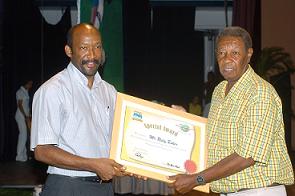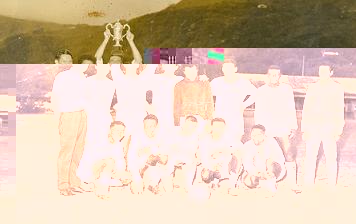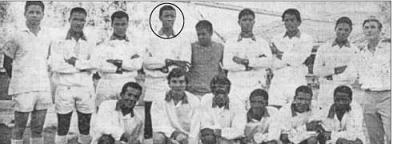Football: Rolly Baker, Seychelles’ most outstanding footballer during the past 50 years-“It’s a surprise and quite heavy on my shoulders” |29 November 2007

“It came as a surprise. I knew I had made a good contribution to Seychelles football as a 
Born on November 1, 1938, Baker, whose younger brother Jimmy was a sweeper with the Ascot and the Seychelles national teams and even coached the country’s team, started playing four-a-side football with 10 year-olds when he was just six.
He played primary and secondary level football before joining the Seychelles College team. As a regular with the Seychelles College team where he met his mentor, Brother Austin, Baker, who played as an inside-right forward, enjoyed first division football from 1955 to 1957.

“I stopped playing football not because of an injury, but because the doctor advised me to as he thought there was gradual wear and tear in my right knee. It hit me hard as if somebody had passed a death sentence on me. I had planned to play until 40 years old, but I was 35 when I was told to stop playing,” he said.
Able to find space, beat an opponent, put defenders off balance and time his runs, Baker was also a member of the country’s first national team and on April 12, 1970, the squad, coached by Adrian Fisher, travelled to Kenya to participate in a friendly tournament. It took the team two days to reach Kenya by boat and playing for the first time on a full-size football pitch, they drew 2-2 with Feisel and lost 1-2 to Mwengi in the Mombassa Stadium.
Baker and Louis Woodcock scored for Seychelles against Feisel while Anthony Hoareau netted the team’s consolation goal against Mwengi.
Upon the team’s return home, goalscorer Baker was quoted as saying that “there could have been many Seychellois in the stands but to our ears it sounded as if the place was filled with them. We tried to respond, but the occasion seemed a little too much for us. Being so shaky, we could not get going. Just consider it that this was the first Seychelles national team, its first tour abroad and the first time any of us had played in a proper stadium and it was a foreign one.”
The country’s first national team captain was Dawson Sinon after Baker, who was asked to
Before the national team were formed, the island’s best players were picked to play against tough teams from visiting war ships and carriers.
Baker noted that Fisher not only introduced new skills and techniques to Seychelles football in the 1970s, but also implemented the required 90 minutes of football for a match. Before Fisher’s arrival in Seychelles in late 1969 or early 1970, games were played over 60 minutes (30 minutes each half).
As a player, Baker won almost everything the local game has to offer and he went further:
“We swept the ball every year until 1970. In the early 1970s with Rovers and Rangers emerging as tough contestants, the trophies started changing hands. Still we won at least four of the five trophies in one season. Winning just two trophies in one season was considered a bad season for us.”
A well-known football commentator, Baker said that he made his first live commentary when still a player in 1966. The occasion: the 25th anniversary of the founding of the Football Association in Seychelles.
Asked to comment on today’s football and that played in the old days, Baker said:
“Football is much faster nowadays and players run into open space very well. In the old days, there was more dribbling which is beautiful in the game. More goals were scored in the top division and players were more committed in a certain way. For example, Joseph Larue would receive news of a match in the morning and he pedalled
Baker’s wish is to see a football league where players can control and pass the ball well.
“This is why our country’s national team fail. Players lack accuracy in passing the ball, lack ball control and individual techniques. But one good thing is they move well off the ball and they are quick,” he said.
One of the greatest Seychellois footballers and the linchpin of the Ascot team, Baker noted that it’s a shame some good players were not considered to be among the top 50 players in Seychelles over the last 50 years.
For him, Precy Delpech, Joseph Larue, Dawson Sinon (the first national team captain), Gerard Pelissier, the deceased Philip Labrosse, Leif Larsen, Louis Vel and Anthony Hoareau deserved some kind of recognition for their role played in the development of football in Seychelles.
Had he not been so modest, Baker could have claimed, with some justification, that he is one of the most famous living Seychellois right now!
G. G.




